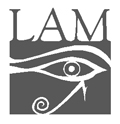The eLitMed.hu medical portal uses computer cookies for convenient operation. Detailed information can be found in the Cookie-policy.
Lege Artis Medicinae - 2005;15(06)
Content
[THE CLINICAL PHARMACOLOGIC BASIS OF THE SAFE USE OF STATIN ANALOGS]
[Statins, specific inhibitors of the 3-hydroxy-3-methylglutaryl- coenzyme A (HMG-CoA), decrease significantly pathologically elevated cholesterol levels. The effectiveness and the side effects of the different analogs depend on their inhibitory potency, lipid solubility, active uptake into the liver cells and on the difference in their metabolism. The statins can be divided into three groups on the basis of their clinical effectiveness: the highly effective agents are rosuvastatin and atorvastatin; simvastatin exhibits an intermediate activity, while lovastatin, pravastatin and fluvastatin are the least active drugs. The main metabolic pathways of the statins are oxidation and glucoronidation and finally the spontaneous inactivation by lactone ring formation of the glucoronidated products. Gemfibrozil increases the plasma level of all statin analogs by inhibiting the activity of UGT1A1 and UGT1A3 isoenzymes of the UDPglucoronosyltransferase. Therefore, when a statinfibrate combination is needed, fenofibrate and bezafibrate are recommended, the metabolism of which are linked to other UGT isoenzymes. Similarly elevated plasma levels are produced by inhibiting the specific cytochrome isoforms participating in the oxidation of a particular statin. Severe side effects are rarely observed. The most frequent adverse reaction is the development of myopathy of various severity. Using various statins rhabdomyolysis occurred in 0.0-0.3 cases /100 000 statin prescriptions if the already withdrawn cerivastatin is not considered. The statin+gemfibrozil combination increases the number of rhabdomyolysis approximately tenfold. The long-term benefit of statin therapy far exceeds the risk of the treatment. For achieving very low lipid target values even the most effective statins must be used in high doses. Nevertheless, this goal cannot be reached in about 20% of the cases. High dose statin treatment should be administered with the gradual increase of the dose, tight control of the patients and by meticulously selecting the drugs given simultaneously. Further development can be expected from the application of agents with new mechanisms of action, such as the cholesterol uptake inhibitor ezetimibe.]
[NEPHROPATHY CAUSED BY PHYTOTHERAPY - LESSONS LEARNED]
[Modern medical science, the ‘officially’ recognised medicine, relies on evidence based medicine, in contrast to the ancient, empirical practice that is gradually gaining ground in the population. This is now referred to as complementary alternative medicine. Alternative medicine has been present throughout the whole history of medicine and gaining popularity these days. Complementary medicine with its various branches and methodology, however, remains controversial - even in some aspects hazardous - due to the lack of scientifically valid evidence. The article deals in detail with the severe side effects of phytotherapy, with an illustration of the so-called ‘chinese herb nephropathy’, an ailment that afflicted more than 100 women on diet in Belgium. For two consecutive years these women took plant extracts labelled Stephania tetranda and Magnolia officinalis plus fenfluramin, diaethylpropion, cascara powder, acetazolamide, extracts of belladonna and meprobamate. The results: chronic renal failure, precancerous urinary tract conditions and aortic valve damage. Detailed analysis suspects the toxic substance of aristolochic acid found in one of the herbs to be the likely cause for the organ and tissue damage. These cases illustrate the need for the cautious approach towards phytotherapy and suggest that in the case of complementary medicine therapy one can not ignore the results of evidence based medicine. In this article, we critically analyse the state of modern and alternative medicine and emphasize that two separate types of medicine does not exist - only one, that has to integrate the methods of complementary medicine that are acceptable, and at the same time charlatan practice must not prevail.]
[DIAGNOSTIC POSSIBILITIES IN HEAD AND NECK MRI]
[Digital cross-sectional imaging techniques, especially computed tomography (CT) and magnetic resonance imaging (MRI) play an important role in the diagnosis of pathologic conditions affecting the head and neck. MRI, because of its superb soft tissue contrast resolution and multiplanar imaging ability gives the most information regarding the origin and the extent of a laesion, intracranial extension, perineural-, as well as bone marrow involvement and play key role in the management of different diseases. Careful observation of the characteristic radiological features usually leads to correct diagnosis, however, some of the lesions are not typical, looking very similar and can be difficult to differentiate from each other. The purpose of the present article is to provide an overview of the most common pathologic conditions examined with MRI.]
[THE PLACE OF OPEN SURGICAL INTERVENTIONS IN THE ERA OF LAPAROSCOPIC HIATAL HERNIA RECONSTRUCTION AND ANTIREFLUX SURGERY]
[INTRODUCTION - The leading role of laparoscopy in the surgical treatment of functional diseases of the gastro-esophageal junction has become indisputable. But has the time of the “classic”, open surgical interventions really gone for good? PATIENTS AND METHODS - Between January 1., 2000 and December 31., 2004 we performed hiatal reconstruction and antireflux plastics for 186 patients. 83.3% (155/186) of the operations was performed laparoscopically, while 16.7% (31/186) with the traditional approach. The average age of patients was 46.9 years, 7% of the operations was performed on children. In case of recurrent paraoesophageal hernias the surgical plan was drawn up based on the result of the barium swallow X-ray performed after endoscopic clipping of the Z-line. In case of a brachy-esophagus, we formed the neo-esophagus by performing the Collis-Nissen operation modified by us (Neodinium magnet + plastic sliding scale) from the traditional abdominal exposure. RESULTS - The indication for hiatal reconstruction and antireflux operation was sliding hernia in 68.2%, paraesophageal hernia in 17.8% and reflux disease in 14%. We observed signs of panmural esophagitis in 22%, while latent or true brachy-esophagus in 10.7%. Antireflux procedures were grouped as Nissen type operation in 82.7%, Toupet type in 9.67%, Narbona in 2.1%, Belsey-Mark IV in 1.61%, and resection type operation in 3.76%. To narrow the diaphragmatic openings, two sutures were needed in most cases (57.1%). Conversion to laparotomy was necessary in 3.2%. We observed recurrences in 3.3% after laparoscopic interventions. In case of open operations we experienced no recurrences in the studied period. The barium swallow X-ray examination performed after endoscopic clipping of the Z-line could reveal brachy-esophagus before the operation. CONCLUSION - Open surgical interventions can not fall into oblivion even in the age of laparoscopic hiatal reconstructions and antireflux plastics. Open surgical procedures are justified even in the new milennium in cases when the patient's medical history contains upper abdominal operations - due to an increased risk of injury because of adhesions -,in cases of primarily recurrent paraesophageal hernias after an unsuccessful open and/or laparoscopic reconstruction, as well as in cases of reflux with complications.]
[SUBCONJUNCTIVAL NEMATODE INFECTION]
[INTRODUCTION - Nematode infection of the eye occur only sporadically in the continental area. The pathogenic parasite in these cases is usually a Dirofilaria species, mostly D. repens. CASE REPORT - A case of human subconjunctival dirofilariosis is reported, where acquisition from abroad or animal contact in the background of the infection were excluded. The surgical removal of the entire living worm resulted in the complete cure of the patient. CONCLUSION - Knowing the occurrence of Dirofilaria infection of dogs and the increasing spread of the vector mosquitoes during the summer (in towns, too), the increasing occurrence of human dirofilariosis affecting the eye and orbital area in 10-20% of the cases must be taken into account.]
[NECROTIZING VASCULITIS AND THE GRANULOMATOUS INFLAMMATION OF THE SMALL INTESTINE. IS IT A SEPARATE ENTITY OR A SPECIAL FORM OF CROHN'S DISEASE?]
[INTRODUCTION - Churg and Strauss has reported a disease entity in 1951 characterized by asthma, eosinophilia in the peripheral blood as well as in different organs or tissues, systemic necrotizing vasculitis and extravascular tuberculoid granulomas. This granulomatous inflammation affected dominantly the wall of small vessels. The reason of allergic angiitis and granulomatous reaction is unknown but the role of some drugs used in the treatment of asthma was raised. There are a few reviews mentioning that the gastrointestinal tract, especially the small intestine can alos be involved. According to Morson, the clinical symptomes of these cases are mimicking Crohn’s disease. Oral contraceptives can also provoke allergic granulomatous angiitis, involving the gastrointestinal tract too. CASE REPORT - Two cases are described. One of them is a 35-year-old woman (the mother) who was treated because of idiopathic ulcerative colitis for a long time. Later, she was operated on because of mechanical ileus. Microscopically, in the resected specimen there was an intact mucous membrane and submucosal layer of small intestine, contradicting Crohn’s disease. On the other hand, the subserosal and the muscular layers were involved. The characteristic microscopic change were: necrotizing vasculitis involving the small vessels and a granulomatous change in the vessel walls. One of the daughters of a patient had to be been operated due to Crohn's disease. CONCLUSION - The accumulation of the cases affected by inflammatory bowel disease in the same family is reported raising the possibility of pathogenetic relationship.]
1.
Clinical Neuroscience
[Headache registry in Szeged: Experiences regarding to migraine patients]2.
Clinical Neuroscience
[The new target population of stroke awareness campaign: Kindergarten students ]3.
Clinical Neuroscience
Is there any difference in mortality rates of atrial fibrillation detected before or after ischemic stroke?4.
Clinical Neuroscience
Factors influencing the level of stigma in Parkinson’s disease in western Turkey5.
Clinical Neuroscience
[The effects of demographic and clinical factors on the severity of poststroke aphasia]1.
2.
Clinical Oncology
[Pancreatic cancer: ESMO Clinical Practice Guideline for diagnosis, treatment and follow-up]3.
Clinical Oncology
[Pharmacovigilance landscape – Lessons from the past and opportunities for future]4.
5.

















